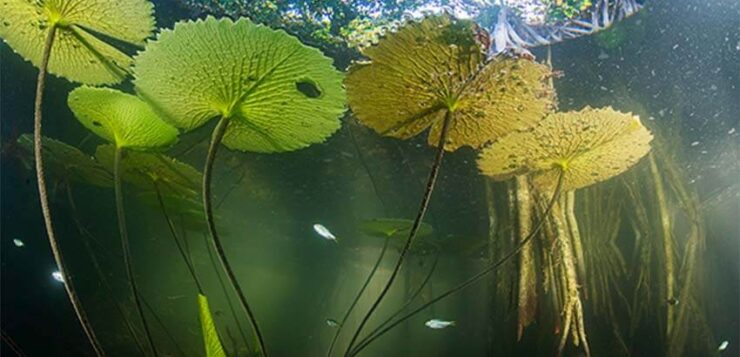Researchers say it’s a remnant from a past, warmer world
An ancient mangrove forest hidden in rainforest in the heart of the Yucatán Peninsula is the focus of a new study by researchers from Mexico and the United States.
Located 170 kilometers from the ocean on the banks of the San Pedro Martir River in the municipality of Balancán, Tabasco, the ecosystem is unusual because mangroves are usually found along tropical and subtropical coastlines.
“Combining multiple lines of evidence, we demonstrate that this extant forest is a relict from a past, warmer world when relative sea levels were 6 to 9 meters higher than at the present,” the researchers said in a paper published Monday in the Proceedings of the National Academy of Sciences of the United States of America.
A relict is a remnant of a formerly widespread species that persists in an isolated area.
“Our finding highlights the extensive landscape impacts of past climate change on the world’s coastline and opens opportunities to better understand future scenarios of relative sea-level rise,” said the researchers, who work at the University of California in the United States, the Juárez Autonomous University of Tabasco and Pronatura Noroeste, a conservation organization in Ensenada, Baja California.

Via their study, which integrates genetic, geological and vegetation data with sea-level modeling, the researchers concluded that the San Pedro mangrove forest was established in its current location in Tabasco during the last interglacial period about 125,000 years ago, when sea levels were high enough to flood the Tabasco lowlands. It remained there in isolation even as oceans receded during the last glaciation.
“The most amazing part of this study is that we were able to examine a mangrove ecosystem that has been trapped in time for more than 100,000 years,” said Octavio Aburto-Oropeza, a University of California marine ecologist and one of the co-authors.
“There is certainly more to discover about how the many species in this ecosystem adapted throughout different environmental conditions over the past 100,000 years. Studying these past adaptations will be very important for us to better understand future conditions in a changing climate.”
Carlos Burelo, a botanist at the Juárez Autonomous University and a native of Tabasco, brought the mangrove forest to the other researchers’ attention in 2016.
“I used to fish here and play on these mangroves as a kid, but we never knew precisely how they got there,” he said. “That was the driving question that brought the team together.”
Felipe Zapata, one of two University of California ecologists who led the genetic work to estimate the origin and age of the mangroves, described the study’s findings as “extraordinary.”
“Not only are the red mangroves here with their origins printed in their DNA, but the whole coastal lagoon ecosystem of the last interglacial has found refuge here,” he said.
The researchers said they hope their findings convince the Tabasco and federal governments of the need to protect the ancient ecosystem.
“The story of Pleistocene glacial cycles is written in the DNA of its plants waiting for scientists to decipher it, but more importantly, the San Pedro mangroves are warning us about the dramatic impact that climate change could have on the coastal plains of the Gulf of Mexico if we do not take urgent action to stop the emission of greenhouse gases,” they said.
Mexico News Daily





